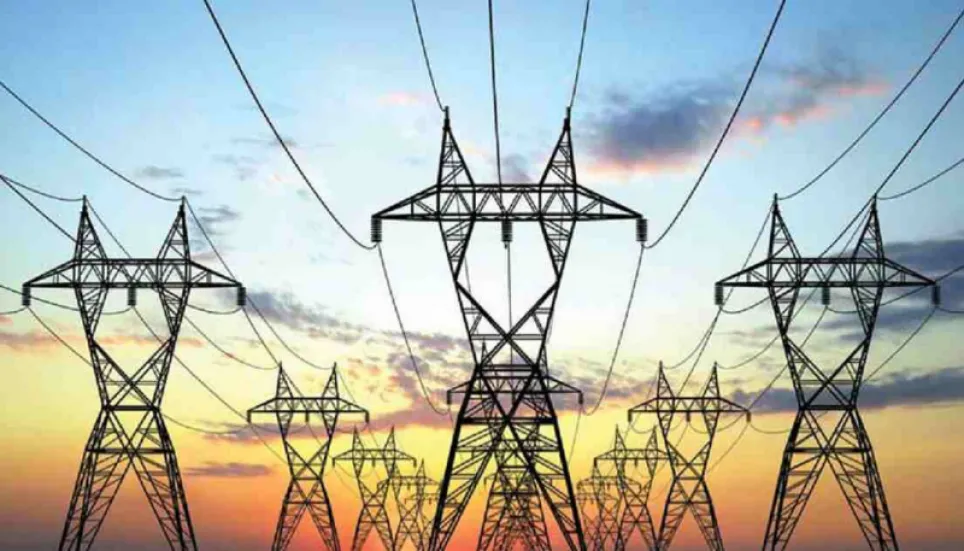
Bangladesh is now capable to produce more electricity than it consumes. Yet the consumers are hit by frequent disruptions in power supply, even in the capital city.
According to official data, the country has attained the capacity of generating over 24,000 MW of electricity a day as against the current daily consumption of only 13,000 MW.
Yet, in capital Dhaka, the major hub of power consumption, and other parts of the country users suffer from supply disruptions, a phenomenon blamed on poor transmission system, faulty distribution lines, renovation and repair works.
Official record shows that a consumer in Desco-covered north-western and eastern parts of the capital experience interruptions on of average 13.77 times a year, while a consumer in the DPDC areas, south-western and central part of the city, faces 17.61 interruptions in the same period.
In technical term, it is called System Average Interruption Frequency Index (SAIFI) which is the average number of sustained interruptions per consumer during a year. It is the ratio of the annual number of interruptions to the number of consumers.
Similarly, the record on System Average Interruption Duration Index (SAIDI) shows that each consumer in Desco area live without power for 367.28 minutes (about 6.12 hours). In DPDC area, outages occur for 234.53 minutes (about 4 hours) a year.
The figures of SAIFI and SAIDI have been taken from annual reports 2019-20 of Desco and DPDC. Energy experts believe the situation is worse outside Dhaka.
Dr Md Ziaur Rahman Khan, a professor of the Department Electrical and Electronic Engineering of Bangladesh University of Engineering and Technolgy (BUET), said SAIFI and SAIDI have been the two main measuring indicators to understand the quality and reliability of a power distribution network.
According to him, many developed countries, especially those in Europe, America and Asia, now maintain the zero figure in SAIFI and SAIDI in their power distribution networks.
Available statistics reveal that the SAIDI was recorded to 1.06 minutes in Singapore in 2019 while SAIFI was 0.052.
Prof Zia noted that though Bangladesh’s power generation has made a robust growth in recent years, still the country is much behind of India in ensuring quality distribution of power, though slightly ahead of Pakistan and Sri Lanka.
Other experts are also of the similar view as they said simultaneous attention should have been paid to both the distribution and the transmission along with boosting generation.
“The government has failed to pay the due attention to the improvement of the distribution and transmission segments,” says Khandaker Golam Moazzem, research director of Centre for Policy Dialogue (CPD), at a recent webinar.
A recent presentation of Desco on power distribution reveals that it recorded 11,369 incidents of power interruptions in a year in its command areas in the capital.
Officials in the power sector believe the situation in DPDC area is worse than in Desco’s.
The Desco findings have identified the reasons behind the interruptions: faults in cables, insulators and high-tension consumer equipment, objects hitting power cables, collapsing cables, fault in capacitor bank and fault in former loop.
Farid Hossain, a resident of Sector 7 in Uttara, said he experienced power cuts thrice a day last week in June, though for short durations.
Mahfuzur Rahman, who lives in Malibagh Rail Gate area, reported that power cut in his area is so common at it happens almost every day.
Similarly, some consumers in Siddeswari, Shantinagar, Jatrabari and many other areas in the capital also complained of regular power interruptions in their areas.
Desco Managing Director Kausar Ameer Ali said supply disruptions sometimes occur in its command areas, but that is not a regular phenomenon.
“These irregular interruptions happen either for maintenance work or sudden fault sometimes develops in the system,” he said, adding that the situation is gradually improving as Desco has been implementing a good number of projects to make it better.”
He said projects have been taken to take overhead cables underground and set up adequate substations. “Once these projects are implemented, the situation will improve substantially,” he told UNB.
Similarly, DPDC Managing Director Bikash Dewan admitted some interruptions in his power distribution network, including in Shantinagar, Siddeswari and Malibagh Rail Gate areas.
He said interruptions occur for weaknesses in the distribution network. “But sometimes it happens for which consumers are responsible,” he said.
Dewan noted that in many areas when construction materials or any unwanted objects fall on power cables, which are mainly bare conductors, the system trips and interruption takes place.
He says work to replace overhead cables with underground ones are on. Bare conductors will also be replaced with insulated cables to prevent interruptions.
Dewan, however, said the Covid-19 pandemic is delaying the implementation of these projects.